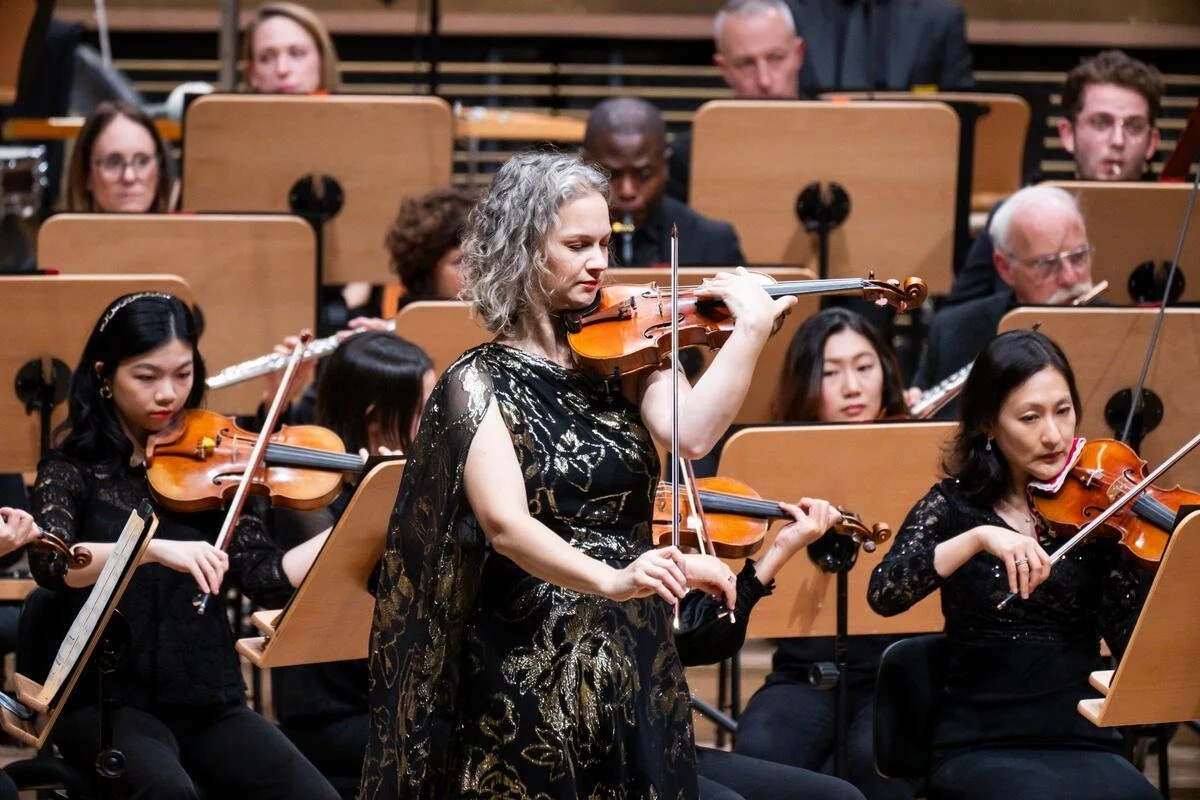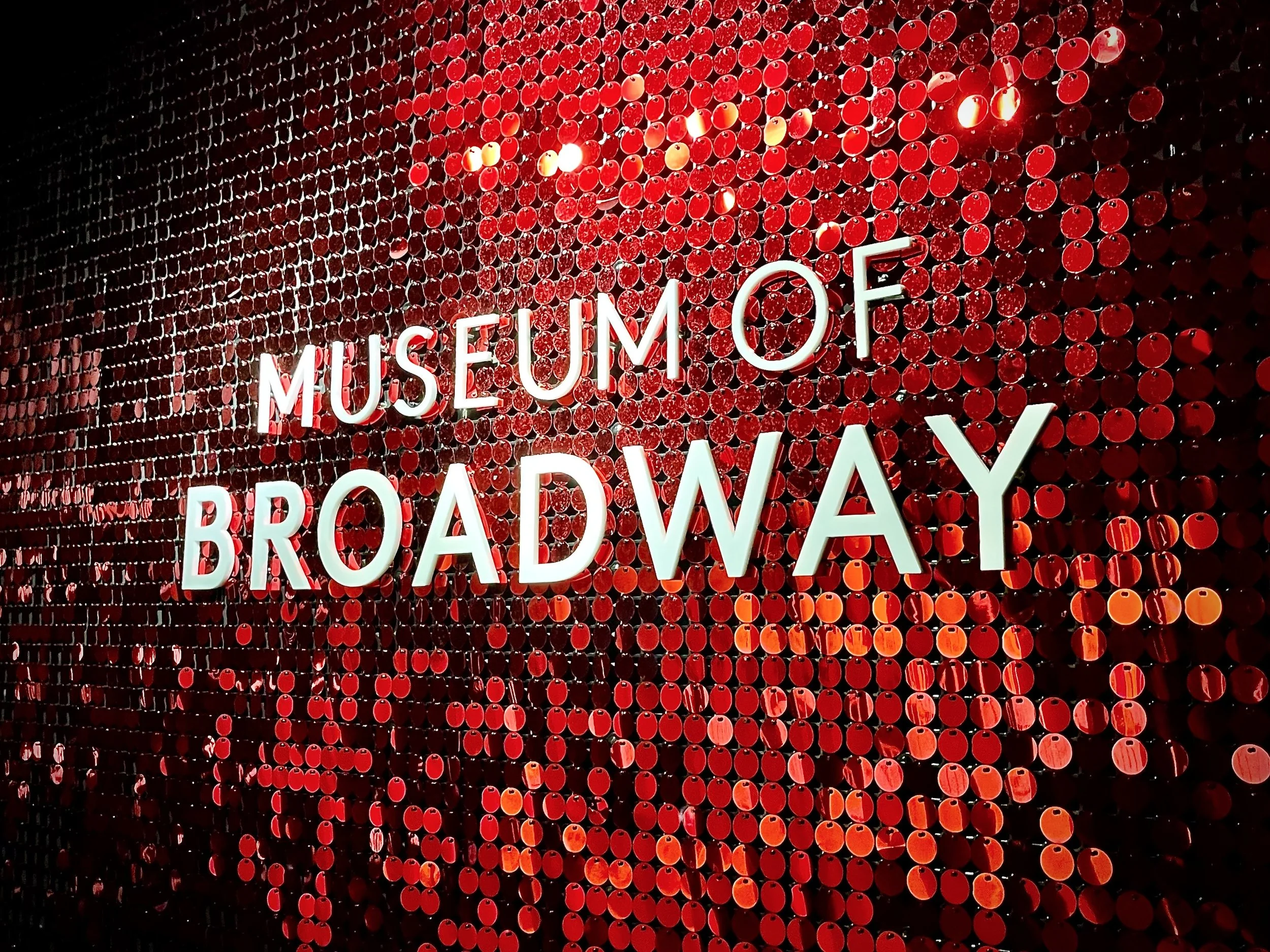REVIEW: Prototype Festival Unearths "Chornobyldorf"
Above photo by Valeriia Landar.
January 11, 2024
Chornobyldorf — receiving its US Premiere as part of the tenth season of the Prototype Festival — is described by its creators as an Archeological Opera. Permeating the cavernous blackbox Ellen Stewart Theater at La Mama Experimental Theatre Club, this ambitious multimedia work indeed expands the definition of opera.
A holistic, visceral Ukrainian response to imagined apocalypse, and present trauma, Chornobyldorf consists of seven parts — termed “novellas” — delineated in “a series of video performances created during expeditions through the post-industrial landscapes” (video design by Dmytro Tentiuk). Co-composers and co-directors, Roman Grygoriv and Illia Razumeiko serve as lead archeologists, underscoring and shaping vast stretches of the evening, perched at microtonal dulcimer and bandura (a traditional Ukrainian lute-like instrument).
Set after “the death of capitalism, opera, and philosophy,” Chornobyldorf — conceived in 2020, preceding the current war in Ukraine — is redolent of existential struggles that feel increasingly resonant. Indelible imagery rich in symbolism, and haunting, primitivistic musical textures transport the audience through a sculptural stage design, rich folkloric costumes (stage design and costumes by Kateryna Marsh), and moody lighting (designed by Svitlana Zmieieva).
Photo by Artem Galkin
The evening is unsettling, and by equal measure, utterly mystifying. That’s the brilliance of its central metaphor; the audience serves as accidental archeologist, unearthing muddled artifacts and relics, left to reconstruct context through a smeared lens.
The score might be more accurately described as sound design (Vladislav Kotlenko, sound engineer): a rich aural tapestry incorporating amplified acoustic instruments, hypnotic, raw vocalism, and found and invented sounds. Grainy white noise and nervous fidgeting become meaningful. Bits of Ukrainian folk songs, droning and mournful, are discordant and repeated ad nauseam.
The musical rhetoric is most effective when returning to the animalistic. In an early moment, various trombone parts are reassembled outlandishly and used to produce something resembling whale song. Accordions (or bandeons) are hung vertically and pumped to create a rhythmic pad of undulating chords, while the click-clack of fingers on keys create a seafoam-like crackle.
Photo by Valeriia Landar
The seven loosely joined vignettes bring various symbols into focus, but it’s never clear what anything means. References to Greek mythology — chapter titles include Elektra and Orfeo ed Euridice — and the Latin mass provide clues. This is an opera of stagnant, lingering moments — often frustratingly so — rather than a character-driven narrative.
In the fifth “novella,” Messe de Chornobyldorf, faint memories of Baroque music are rendered blurry, like the phone messages transmitted to Bruce Willis’s time-traveling character in 12 Monkeys. Emotions are murky and ill-defined — only moving beyond the obscure when one of the composers unleashes a guttural heavy-metal scream into a microphone.
Confoundment reigns, but it is a privilege to be confounded by new art from the front line of Western democracy. Named one of the top 6 modern operas of 2021 by Music Theatre Now, Chornobyldorf wins accolades because nothing about it rings false.
The final two novellas build in intensity, climaxing with a dancing brass band. The trombones were finally assembled correctly, but all of the instruments here are essentially noisemakers: our preconceived concept of musical technique has been lost — along with opera and philosophy.







